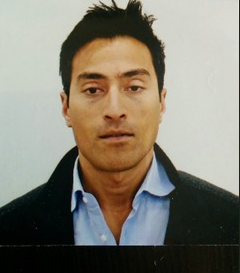Best Practices in Diagnostic Radiology by Dr. Andrew Gomes
Best Practices in Diagnostic Radiology by Dr. Andrew Gomes
Blog Article

The Rising Problem of Diagnostic Reliability in Neurology
Exact examination is in the middle of efficient medical attention, however neurological situations remain notoriously difficult to identify with precision. Disorders such as for instance traumatic brain injuries (TBI), Alzheimer's condition, and multiple sclerosis usually provide with overlapping symptoms, increasing the danger of misdiagnosis. This really is wherever sophisticated imaging practices, like Diffusion Tensor Imaging (DTI), play a major role. Specialists in diagnostic radiology, including Dr. Andrew Gomes Sugar land tx, use DTI to road head task and cellular disruptions with unprecedented accuracy.
Leveraging the Energy of DTI Engineering
Diffusion Tensor Imaging (DTI) assesses the motion of water molecules in brain structure, giving step by step visualizations of bright subject tracts. This degree of understanding assists radiologists identify actually the smallest architectural abnormalities in the mind, providing critical information for early diagnosis and designed treatments. Non-vascular interventional radiologists are individually located to utilize that technology, performing minimally unpleasant imaging techniques to achieve a further comprehension of neurological conditions. Dr. Andrew Gomes views this as a game-changing software in the fight misdiagnosis.
Data-Driven Diagnostic Philosophy
Dr. Gomes highlights a data-driven approach to radiology, advocating for the usage of advanced imaging technologies like DTI to lessen diagnostic uncertainty. By meticulously analyzing patient information, Dr. Gomes guarantees that every diagnosis is supported by objective, science-based evidence. He also shows the possibility of developing DTI results with artificial intelligence techniques to further refine diagnostic accuracy. His commitment to development and patient-centered care remains to shape the continuing future of diagnostic and non-vascular interventional radiology.
Connecting Technology and Patient-Centric Care
The integration of advanced neuroimaging tools like DTI not just improves the accuracy of diagnoses but in addition empowers healthcare companies to supply more precise, patient-focused treatments. By sensing abnormalities early, radiologists play a crucial role in increasing outcomes and reducing the burden of neurological diseases. Professionals like Dr. Andrew Gomes stay at the front of radiological improvements, ensuring technology is used to their highest potential in the constant mission to fight misdiagnosis and raise patient care. Report this page